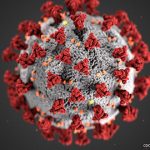Developing the Biomarker
The researchers mined their data and identified the 25 most frequent citrullinated composite epitopes found in RA patients. The investigators determined that many of the most common epitopes identified all the same patients. They then chose four other, less common, epitopes that helped identify their target group of patients, for a total of eight epitopes included in the biomarker, according to Dr. Lo.
The researchers tested this eight-epitope biomarker in 92 serum samples from 63 RA patients and 29 controls. The eight epitopes identified RA patients with 96.6% specificity and 92.1% sensitivity. In comparison, the Abnova CCP2 assay identified RA patients with 96.6% specificity and 68.3% sensitivity.
The investigators validated the eight-epitope biomarker in serum samples from 127 RA patients and 54 controls. It identified all but one CCP2-positive sample and additionally identified 40 CCP2-negative samples. Overall, it had a 94.4% specificity and 85% sensitivity in this cohort, compared with the Abnova CCP2 test’s 96.3% specificity and 53.5% sensitivity.
More RA Diagnoses
Because classifying RA employs a scoring system based on both clinical exams and serology tests, a positive result on a test like the paper describes would “bump up scores and identify patients otherwise not considered to have RA under the current guidelines,” Dr. Lo says.
But the paper is only a proof of principle. Dr. Lo is quick to point out that controls did not include patients with diseases similar to RA—such as psoriatic arthritis—to show just how specific the test is to RA.
Roche had insufficient psoriatic arthritis samples to include in the study. “If we had the samples, we would have done it,” says Dr. Lo.
While he has no immediate plans for a study that includes psoriatic arthritis samples, Lo is exploring other methods to see if he can identify better RA epitopes. “The idea is to use fewer epitopes to achieve the same sensitivity and specificity as the eight we used in the paper,” he explains.
A Method with Potential

Dr. Rao
“This is a really exciting approach that identifies more antibody targets,” says Deepak Rao, MD, PhD, an associate physician at Brigham and Women’s Hospital and assistant professor at Harvard Medical School, Boston.
If the method is further validated, it would represent an improvement over standard tests, which lack sensitivity. The lack of sensitivity “means there are patients with real RA who have negative antibodies by the [Abnova] CCP2,” Dr. Rao added. “The CCP2 may be missing some antibodies in these patients, who may have antibodies to citrullinated proteins, but perhaps not the ones included in the Abnova test,” he says.

